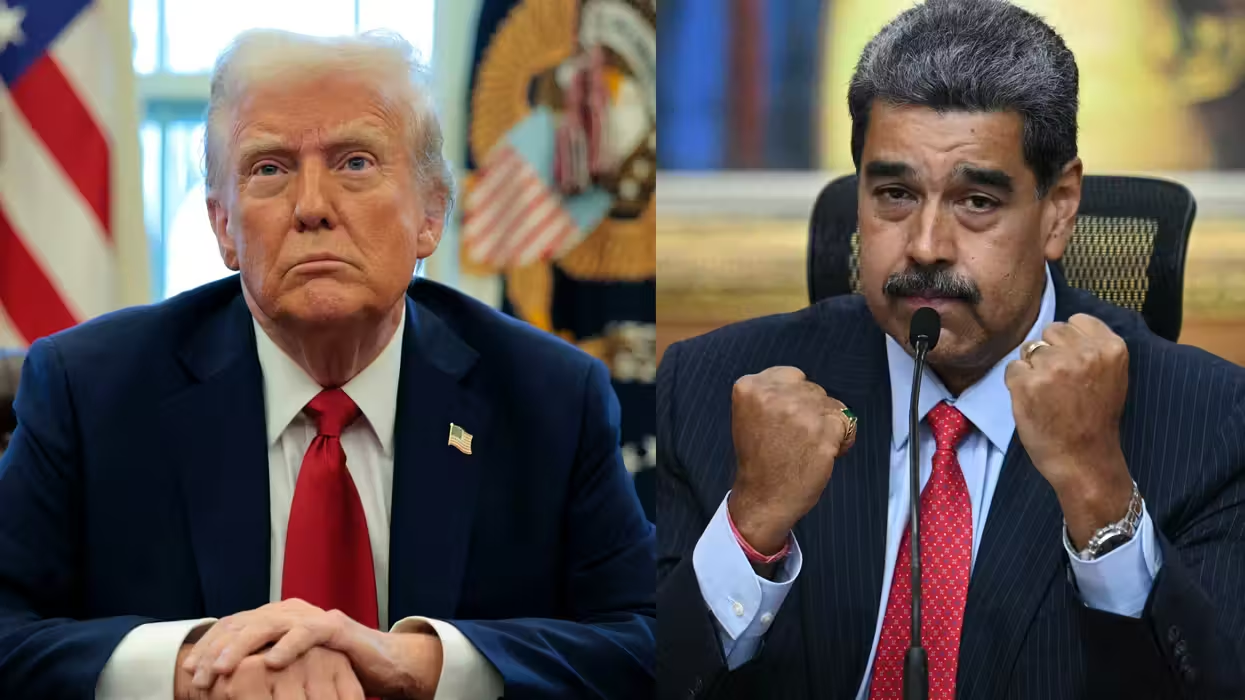Since the mass shooting in Las Vegas that ended with at least 58 people dead and close to 500 injured, anti-gun progressives have been working overtime to convince the American people that gun owners’ rights should be greatly restricted, a move they say will make the United States a much safer place to live.
The left attempts to achieve its vision for a gun-free America by appealing to the emotions of a hurting nation, but if people look beyond the worn-out progressive slogans to the facts, they’ll see that passing restrictive gun laws does not create the promised reductions in crime. In fact, statistics show thousands of lives are saved every year because of legal gun ownership.
Below are three facts that completely dismantle the left’s anti-gun narrative.
No. 1: More guns do not equal more crime.
Progressives’ entire argument about gun ownership hinges on the idea that societies that have more guns are more likely to have greater problems with crime. It has always amazed me how easily so many Americans have bought into such an obviously false claim.
According to researchers at Boston University and Columbia University, there are only six states in which at least 50 percent of the households are believed to own a gun: Alaska, Arkansas, Idaho, Montana, West Virginia and Wyoming. If liberals’ arguments about guns were true, we should expect these six states to have extremely high crime rates, with an emphasis on murder and other violent crimes. The evidence reveals the opposite.
The Centers for Disease Control and Prevention reported four of the six states — Idaho, Montana, West Virginia and Wyoming — ranked in the top half of all states for having the lowest homicide rates in 2015, with Idaho and Wyoming ranking in the top six. Further, although Arkansas has both a high gun-ownership rate and high homicide rate, it had a lower homicide rate than four of its six neighboring states (Louisiana, Mississippi, Missouri and Oklahoma), even though it had a higher gun-ownership rate than all of those states. And a review of other forms of crime statistics will reveal similar results.
So, if more guns don’t equate to their being more crime, what does? Generally speaking, poverty. In states where income disparities are lower, you tend to see fewer violent crimes. In states with higher disparities (and thus more extreme poverty), there’s more crime.
What about all of the statistics showing high gun-related deaths? Progressives love to show charts, graphs and tables supposedly establishing a connection between gun-related deaths and gun laws. What they almost never do, however, is tell people that gun-related death statistics include suicides, which greatly skew the results, especially since many rural states (where gun ownership is high) often have high suicide rates.
No. 2: Stricter gun laws don’t prevent violent crimes.
Progressives often argue that the only way to stop gun-related crime is to restrict gun ownership for everyone. People living in cities like Chicago, where the gun laws are very strict but there’s also lots of gun crimes, know this isn’t true. But when liberals are faced with examples such as Chicago, they will quickly say that the problem is guns are flooding into the city from other places. If gun laws were strict everywhere, they argue, gun crimes would be reduced.
If this were true, we should see lots of crime in states with lax gun laws. After all, if criminals are buying guns legally in the hopes of hurting other people, wouldn’t they be more likely to do this in states where it’s easier to buy guns?
Here, as we saw before, progressives are totally wrong. Many states with extremely lax gun laws have very low crime rates as well. The Law Center to Prevent Gun Violence, a group that advocates for gun control, gave in its recent gun-control report card “F” grades to five out of the six states with the lowest homicide rates. The sixth state, New Hampshire, received a “D” grade. And these states also have very low crime rates in virtually every other category.
What about mass shootings like the one that happened in Las Vegas? Surely those would be prevented with stricter gun laws, right? Again, the research says otherwise. In an op-ed published Wednesday in the Washington Post, statistician Leah Libresco, a person who said she used to support gun-control laws (until she examined the evidence for herself), said the data show Australia and Britain have not experienced fewer mass shootings following their efforts to tighten gun laws.
“I researched the strictly tightened gun laws in Britain and Australia and concluded that they didn’t prove much about what America’s policy should be,” Libresco wrote. “Neither nation experienced drops in mass shootings or other gun related-crime that could be attributed to their buybacks and bans. Mass shootings were too rare in Australia for their absence after the buyback program to be clear evidence of progress. And in both Australia and Britain, the gun restrictions had an ambiguous effect on other gun-related crimes or deaths.”
Further, gun-control advocates ignore the fact that guns save lives every year. Numerous surveys have been conducted on defensive gun uses, and they report there are hundreds of thousands of defensive gun uses every single year. Some report more than 2 million. Even on the lowest end of the spectrum — the National Crime Victimization Survey — more than 67,000 people used guns to defend themselves or their property. (About 33,000 people are killed every year from guns nationwide, and two-thirds of those deaths are suicides.)
No. 3: Ridding America of its guns would be virtually impossible and conflicts with other progressive beliefs.
The United States has a gun culture unlike any other in the world. No one knows exactly how many guns exist across the country, but most estimates show around 270 million. Some show nearly as many guns as people. And guns aren’t just a hobby; for many Americans, gun ownership is considered an essential liberty. Even if the U.S. Congress were to pass laws severely restricting all forms of gun ownership, what would happen to the hundreds of millions of guns currently in existence? What would the government do to the millions of people who would refuse to give up their guns?
Progressives know passing restrictive gun laws anytime in the near future is an impossibility, but it remains one of their primary long-term goals, despite being in complete opposition to other progressive beliefs. For instance, progressives routinely demand strict gun control limits while at the same advocating for open borders. Even if the federal government could destroy every gun now in America, without closing our massive borders, guns would come flooding back in! True gun control without massive border-security improvements is not feasible, and of the two policies (open borders or gun control), it seems unlikely progressives would choose taking guns away over allowing illegal immigrants to enter the United States—at least for now.
Further, what is the logical end of strict gun control? No or very little private gun ownership. That would leave only the military and police officers with guns, and progressives are constantly arguing racism is rampant in U.S. police departments. Why, then, would the left want the police to be the only ones in our society armed?
Tragedies like the one that occurred Sunday night in Las Vegas are indisputably horrific, and Americans should do whatever they can, within reason and without destroying liberty, to prevent such events from happening again. But isolated tragedies should never be an excuse for limiting personal freedoms, and even if the case could be made that gun-control laws would reduce murders (it can’t), Americans need to consider the long-term ramifications of that decision. The Second Amendment wasn’t primarily passed so people would have guns to hunt and protect their homes; it was created and approved by the American people through their elected representatives to protect the people from a tyrannical government. As some unknown American writer once said, “When the people fear the government, there’s tyranny. When the government fears the people, there’s liberty.”







